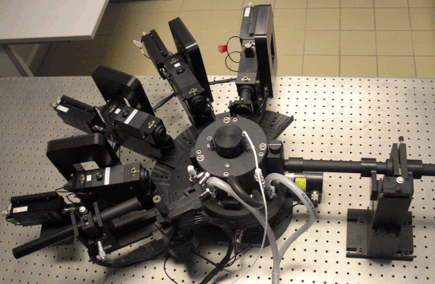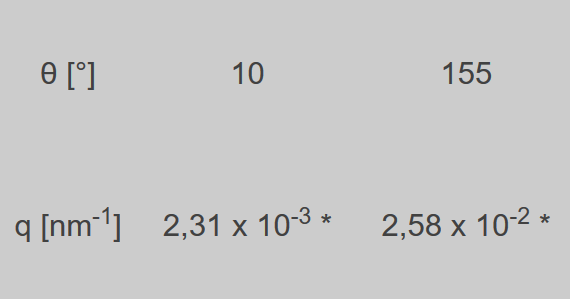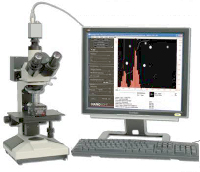Competences
The used radiation, in this case polarized coherent light, and polymer macromolecules can interact together, inducing a polarization of these latter and a reemission of light in all space directions: this phenomenon is called light scattering
It allows to characterize in situ self-assemblies based on polymers more or less organized going from solutions, suspensions or emulsions to physical or chemical gels, in terms of:
- gyration radius, second virial coefficient and apparent weight molar mass as far as concerns static light scattering;
- intermolecular and/or intramolecular decorrelation time, diffusion coefficient and hydrodynamic radius as far as concerns dynamic light scattering.
Coupling both techniques goes beyond the in situ determination of the morphology and is of high interest for deeper understanding the architecture and the compacity of self-assemblies.
Equipments
ALV light scattering apparatus
A high performance light scattering apparatus of type ALV/CGS-8F S/N 069, equipped with a red helium-neon laser (JDSU) operating at a wavelength of 632.8 nm and at a power smaller than 35 mW (class 3B), is available at Cermav. The measured sample is in a temperature-regulated toluene bath.

The goniometer ALV/CGS-8F has the main particularity to possess four detectors (see right hand side photo) of type avalanche photodiodes, allowing so many simultaneous measurements at four different angles. The accessible detection angles θ and the moduli of the scattering vector q can reach the extreme values shown in the table →

Particle visualization apparatus
A high sensitivity video camera system (Nanosight) allows to visualize in situ nanoparticles in a liquid. A software having a powerful algorithm follows the particle track (Brownian movement) with time and deduces the diffusion coefficient of each analyzed particle. Knowing the liquid viscosity and measuring the temperature allows to obtain the hydrodynamic radii and the number size distribution. This is a direct analysis method very complementary to dynamic light scattering.

This instrument is optimum for concentrations in the order of magnitude of 107-108 particles per ml and the range of accessible particle sizes goes from 10 nm up to 1 μm. It is equipped with a device allowing temperature control, and with a blue laser for fluorescence, what makes it complementary to confocal microscopy in liquid medium.
Complementary equipment
It is dedicated to the related measurements of refractive index and refractive index increment, on the one hand, and to the viscosity measurements, on the other hand:
- Refractometer by Optilab: of type Optilab-Rex, it uses a wavelength of 632.8 nm.
- Rheometers and capillar viscosimeter (Rheology facility).
Access
This facility is open to the scientific community (laboratories and companies) in the framework of collaborative programs or provisions of a service.


